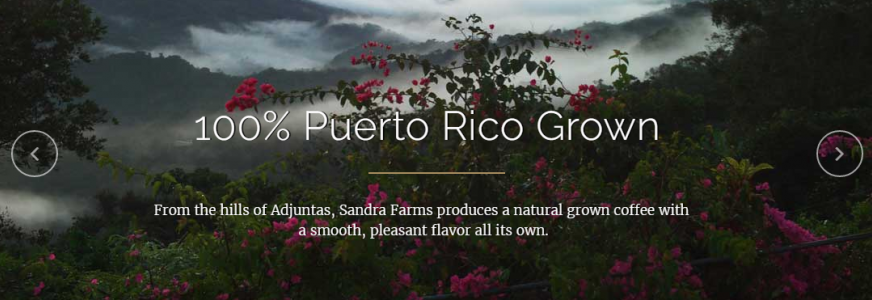In the 1890’s Puerto Rico became the world’s sixth largest exporter of coffee. It was the favorite of kings and popes.
Today, Sandra Farms strives to equal the excellence of centuries past by caring for and processing its coffee lovingly.
We are focused on creating sustainable coffee processes that will enhance and encourage Puerto Rico coffee production for many years to come.
THE TREES
Sandra Farms coffee trees are all specialty coffee varieties with breathtaking aromas. Our farm features Arabica varieties Bourbon, Catahuai, Typica, Caturra and other special coffee varieties selected by our local Agriculture Extension Station managed by the University of Puerto Rico Mayaguez. Beans in Sandra Farms coffee are a composite of these varieties and offer a unique combination of aromas and flavors.
THE HARVEST
The harvest season in Puerto Rico is typically from mid-October through late-November depending on the weather conditions. Sandra Farms beans are hand picked. They are then selected and sorted by community women who remove the imperfect beans, ensuring only the best make it to the cup. We are locally grown and produced from beginning to end in Adjuntas, Puerto Rico.NATURAL DRY PROCESS
In natural or dry process coffee, ripe red coffee cherries, freshly picked, are dried intact, sealing in all of nature’s goodness. This is a very old method of preparing coffee beans. The natural drying process allows the natural sugars surrounding the coffee beans to give the coffee a fruity flavor and enhance the body in the cup. This drying process for natural coffee takes over 100 hours at low temperature to achieve the correct moisture level. It is different from the more modern washed or wet process where the red pulp and the sweet sugary mucilage are separated from the beans prior to drying.
“As a boy I remember helping dry ripe typical whole fruit coffee cherries, on a much smaller drying surface. The glacil or drying surface used in the early 1900’s at our farm in Puerto Rico still exists. I used it when we first started to do specialty Arabica, wet process, but the work was brutal, costly and with inconsistent results. I believe that the inconsistency in results was the driving force, plus labor costs, of drying natural/whole fruit and even wet process coffee beans in the sun. Up here in Adjuntas PR the harvest takes place during the rainiest season of the year, and the coolest, also.” ~ Israel Gonzalez, Owner & Farmer, Sandra Farms Coffee



